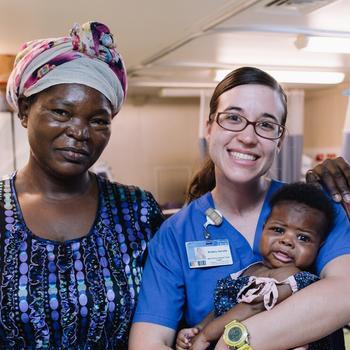Before the Covid-19 lockdown was set in place, the nephrology unit of Safdarjung Hospital would see 600 to 700 patients daily, as per footfall reports. In August 2020, even after the restrictions on OPD visits were eased, the count hovered at around 100 per day.
The sustained lockdown across cities in India has instilled fear in the minds of patients. They feel they must choose between following up on prevalent illnesses and risking exposure to Covid-19. However, patients stand to suffer further deterioration in pre-existing medical conditions if they don’t follow-up in time.
With clinics looking for a route back towards normalcy, medical practitioners could employ proven methods to generate confidence and ensure the safety of their patients.
It is still essential to uphold social distancing guidelines, especially in an environment where the risk involved is significantly higher. Here is a list of precautions that can be taken to prevent the spread of the coronavirus and maintain safety within waiting rooms.
1. Demarcate distances of six feet in the waiting room
Preventing close contact between patients must be the priority in busy waiting rooms; reduced chance of close personal encounters is the first step. This might entail the removal of chairs from waiting areas, and also the creation of six-feet-apart bubbles. This will minimize the chance for crowding and thus the spread of the coronavirus, especially in an environment where health is already a concern.
2. Ask patients to wait for their appointment remotely.
The waiting room should be roped off as often as possible. Patients should be requested to spend time in isolation in their vehicles or outside the clinic, only to enter when their appointment approaches. Doctors can avoid unnecessary contact and interaction while adding a degree of convenience to the process.
3. Make sanitization services and facial protective gear readily available
While patients should be expected to make provisions for their own facemasks, it is essential to have sanitation stations with hand sanitizers face masks available at hand for both patients and staff. It is also important to avoid contact between parties—handshakes and such should be substituted with friendly smiles and waves.
Patients and staff should also see the sanitation of hands as a mandate, and clinic staff should wear appropriate PPE when interacting with patients.
4. Provide treatment to those willing to follow guidelines.
Ultimately, the practitioner’s responsibility is to ensure the benefit of the public at large. Those not following protocol should gently, but firmly, be asked to do so, for the benefit and safety of both clinic staff and fellow patients. While the patient’s health is the utmost priority, their impact upon those around them has to be highlighted as a danger and therefore mitigated.
5. Ask patients to refrain from being accompanied by others, including children
The presence of additional parties in small waiting rooms is another factor which might increase the likelihood of the spread of Covid-19. This is of even greater danger when these parties are those who are likely to be most severely infected—young children, elderly relatives, or immunocompromised characters, for instance. This creates an unnecessary and potentially dangerous burden for patients and faculty.
6. Use technology to fuel open communication
Patient handouts are a clear way to answer pending questions without eating into consultation time. The new connected patient wants a way to understand their body and the condition. Unfortunately, laymen who rely on internet searches for medical information are more likely to find incorrect information which can cause added anxiety. Clinical decision support tools like 5MinuteConsult make the job easier with ready to share patient handouts. The could be a how-to document to prepare a diet chart or consult a self-examination.
Patients are likely to feel a greater self-affirmation when a direct line of contact is established between the doctor and themselves. Being able to communicate and synchronise schedules ensures that arrangements for both parties are not compromised. This can also translate to hosting conversations online using websites or apps such as Telehealth, which can act as a nexus of convenience and safety.
5-point recap
- Establish and strictly implement social distancing norms.
- Keep busy waiting rooms well ventilated and uncrowded.
- Provide hand sanitizers at the entrance and ensure use.
- Mandatory face mask use for patients and front office staff.
- Use telehealth solutions in accordance with current guidelines.





